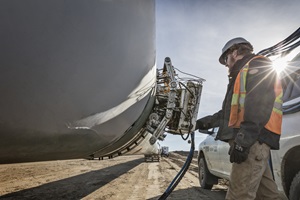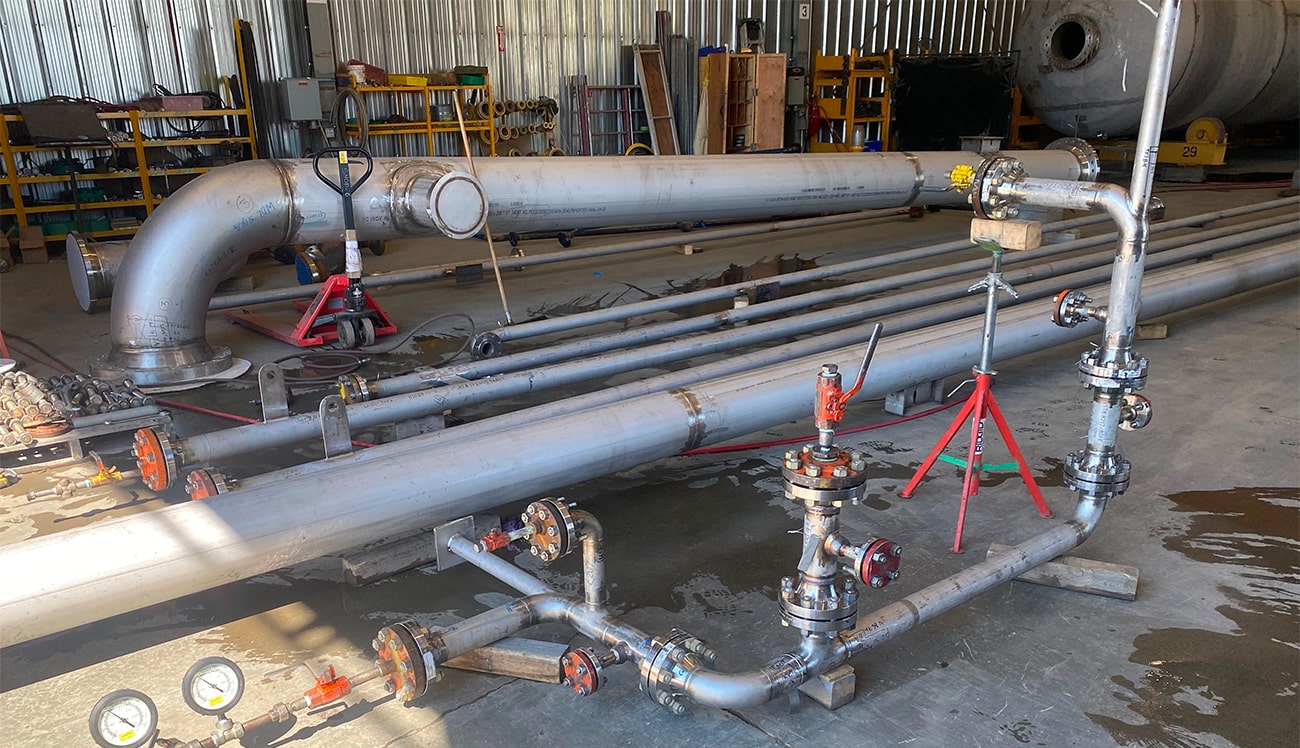Taking Full Advantage Of Efficiency: Pipe Welding Assessment Best Practices
By executing finest techniques for pipe welding inspection, organizations can improve procedures, lessen mistakes, and boost job timelines. The thorough interest to detail needed in welding examination holds the vital to the lasting durability and reliability of the pipes, making it a topic of utmost relevance in the market.

Value of Reliable Welding Examinations
Reliable welding assessments play an essential role in making certain the architectural honesty and safety of pipes. Proper inspections are important to identify any type of defects, interruptions, or flaws in the bonded joints that can jeopardize the overall integrity of the pipe system. By performing extensive examinations, inspectors can spot concerns early, avoiding possible leaks, tears, or failures that can have major ecological and security repercussions.
Accurate and timely welding assessments additionally help in preserving compliance with sector standards and regulations. Adhering to these standards is not just a lawful requirement yet also an essential step to assure the reliability and durability of the pipes. Effective assessments can add to cost savings by decreasing the demand for expensive fixings or substitutes due to welding flaws that can have been protected against or corrected throughout the inspection procedure.
Utilizing Technology for Examinations
To enhance the efficiency and accuracy of pipe welding examinations, the assimilation of sophisticated technologies has actually ended up being significantly important in making sure precise and thorough evaluations of bonded joints. Making use of technology for inspections provides numerous advantages, including enhanced effectiveness, enhanced accuracy, and boosted safety actions. One of the key technical developments in pipe welding assessments is making use of automated ultrasonic testing (AUT) systems. These systems can scan welds rapidly and properly, supplying detailed data on prospective problems or issues within the weld joint. In addition, remote visual evaluation (RVI) tools such as robot spiders outfitted with cams permit assessors to access and review difficult-to-reach areas without the demand for substantial disassembly or manual treatment. The execution of digital systems for data evaluation and reporting improves the inspection process, enabling real-time information interpretation and smooth paperwork. By accepting these technical remedies, pipe welding assessments can be performed a lot more effectively, causing higher high quality welds, enhanced total safety and security, and decreased task timelines.
Establishing Clear Inspection Procedures
Establishing clear examination protocols is necessary for ensuring uniformity and reliability in the pipe welding inspection procedure. These procedures act as a set of guidelines that detail the details actions, requirements, and approaches to be adhered to throughout inspections. By plainly defining the assessment protocols, all inspectors associated with the process can understand their functions and duties, bring about a much more standard and reliable evaluation process.

Regular evaluation and updates to the examination procedures are likewise important to adjust to altering sector standards and needs. By constantly refining and boosting the procedures based on responses and lessons discovered, pipeline welding assessments can promote the finest quality requirements and regulatory conformity.
Training and Accreditations for Examiners

Training and accreditations for inspectors are critical in making sure the skills and proficiency of people charged with overseeing pipeline welding processes - Pipeline Welding Inspection. Properly educated assessors have the necessary understanding and skills to properly examine weld quality, adherence to welding treatments, and compliance with industry standards and policies
Qualifications, such as those provided by the American Welding Society (AWS) or the American Petroleum Institute (API), confirm an assessor's knowledge and capability to do assessments to the greatest requirements. These accreditations often need rigorous training, examinations, and ongoing expert development to make sure that assessors stay present with the current advancements in welding innovation and assessment methods.
Along with official accreditations, continuous training programs play an essential function in enhancing examiners' abilities. These programs cover a large range of topics, consisting of welding procedures, problem discovery, security procedures, and pertinent codes and criteria (Pipeline Welding Inspection). By spending in detailed training and certifications for inspectors, companies can maintain the integrity of their pipe welding projects and minimize the dangers connected with low-grade welds
Continuous Renovation in Evaluation Procedures
Structure upon the foundation of certified and experienced examiners, continual enhancement in examination procedures is vital for making certain the recurring top quality and conformity of pipe welding procedures. By carrying out a system of constant enhancement, pipeline welding inspection processes can advance to fulfill the transforming needs of the market, technological advancements, and regulatory needs. This entails on a regular basis assessing and examining inspection treatments, devices, and techniques to recognize areas for enhancement.
One trick facet of constant improvement in examination processes is feedback. Collecting input from inspectors, welders, designers, and other stakeholders enables a detailed assessment of existing practices and the recognition of potential locations for improvement. In addition, leveraging data and analytics can offer beneficial insights right into the effectiveness of examination my review here processes, making it possible for informed decision-making for optimization.
In addition, investing in training and advancement programs for inspectors can make sure that they are outfitted with the most recent expertise and skills to do their duties effectively. Continual improvement is a dynamic procedure that requires commitment and dedication from all stakeholders to drive quality in pipeline welding evaluation techniques.
Conclusion
In verdict, making best use of performance in pipeline welding evaluations is crucial for making certain the high quality and safety of framework jobs. have a peek at this website By utilizing modern technology, establishing clear methods, supplying proper training and qualifications for examiners, and constantly boosting evaluation processes, companies can streamline their procedures and lessen risks. It is essential for sectors to prioritize effective welding inspections to keep high standards and satisfy regulatory demands.
Reliable evaluations can add to cost savings by decreasing the need for expensive repairs or replacements due to welding issues that could have been stopped or corrected during the assessment procedure.
Establishing clear assessment methods is important for making sure uniformity and reliability in the pipeline welding assessment procedure. By plainly defining the evaluation procedures, all assessors entailed in the process can understand their duties and roles, leading to a more standardized and effective examination operations.
Clear inspection protocols help in decreasing the probability of mistakes or oversights throughout the assessment procedure.Structure upon the structure of qualified and experienced assessors, continual renovation in examination procedures is crucial for ensuring the recurring top quality and conformity of pipe welding procedures.